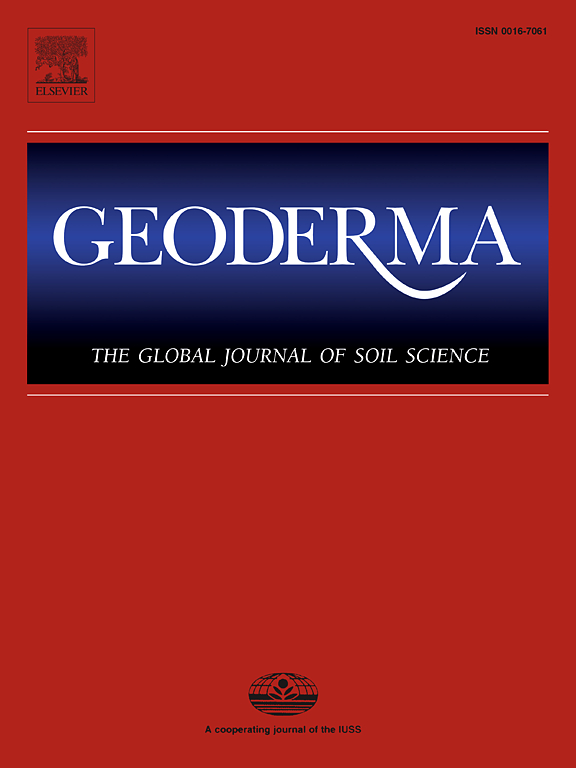An optimal sample size index for updating spatial soil models
IF 5.6
1区 农林科学
Q1 SOIL SCIENCE
引用次数: 0
Abstract
Soil map updates can be expensive due to soil sampling and analysis costs. This study introduces the Optimal Sample Size Index (OSSI), a flexible framework for digital soil mapping that balances model accuracy and sampling costs to update soil spatial models. OSSI determines optimal sample size from subsets of initially available training sets, accounting for different physiographies and model validation metrics with adjustable weights, including root-mean-square-error (RMSE) for cross-validation (CV) and RMSE for independent validation, the standard deviation of RMSE values from 10-fold CV, and relative sampling cost. Relative sampling cost represents the proportion of the number of samples used in modeling to the initially available sample size. We applied two OSSI scenarios to address limitations of the original approach, which prioritized cost reduction but occasionally resulted in unreliable models due to very small training sizes. By adjusting metrics and weights, the second scenario accounted for model uncertainty, producing more reliable models with sample sizes considerably lower than full training sets. Four soil properties (pH, clay, silt, and sand %) were spatially modeled for surface soils in three study areas in Iowa, USA, using random forest regressors. Both scenarios reduced relative sampling costs by up to 92 % compared to using all samples while maintaining similar or improved model performance. The second scenario further ensured model reliability, as shown by lower standard deviations of CV-RMSE values. Our results demonstrate OSSI’s flexibility to balance cost, accuracy, and reliability, offering a practical solution for optimizing soil sample sizes and updating soil survey maps.
求助全文
约1分钟内获得全文
求助全文
来源期刊

Geoderma
农林科学-土壤科学
CiteScore
11.80
自引率
6.60%
发文量
597
审稿时长
58 days
期刊介绍:
Geoderma - the global journal of soil science - welcomes authors, readers and soil research from all parts of the world, encourages worldwide soil studies, and embraces all aspects of soil science and its associated pedagogy. The journal particularly welcomes interdisciplinary work focusing on dynamic soil processes and functions across space and time.
 求助内容:
求助内容: 应助结果提醒方式:
应助结果提醒方式:


